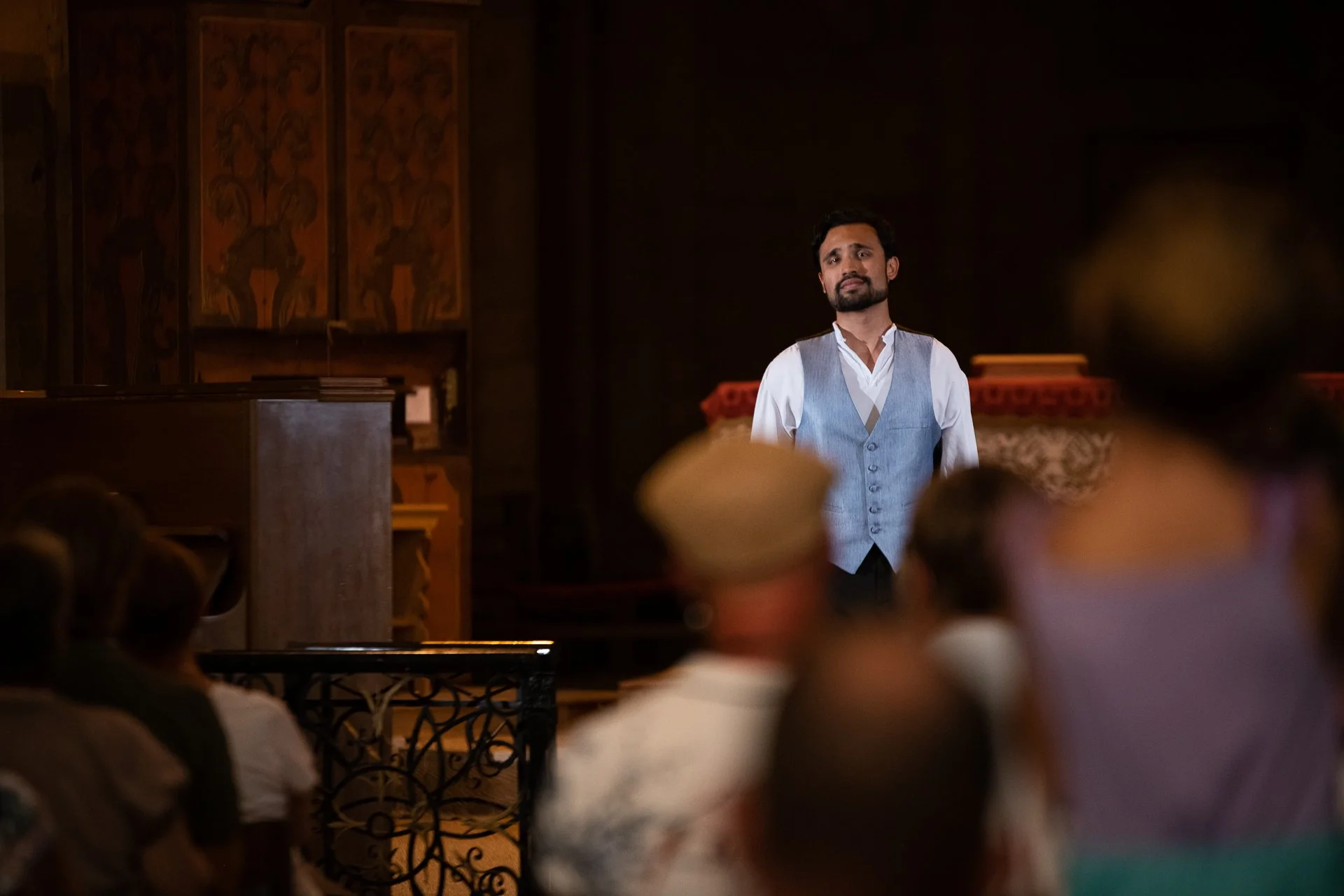For the singer, every exhalation is a new creation. With every breath, the singer tells the story afresh with new air, no tone or gesture ever quite the same. It is this simple mechanism of breath and release by which entire recitals and operas are performed. This is the art of singing: a lifetime of preparation for mere moments of priceless, sonorous storytelling.
Photography by Ariane Maurisson
As precious as these moments are, it is crucial to prepare for them well. In one breath, so many elements must come together: seamless inhalation and exhalation, aligned vowel formation, flawless diction, and such an innate understanding of the language and its context that the singer is able to simply pour out its meaning before the audience. It is the latter element that my time with Classic Lyric Arts most profoundly influenced.
CLA France was a daily baptism into all the facets of French culture: mornings starting with fresh fruit, cheese, and baguettes, afternoons filled with song and poetry coachings, evenings giving way to walks in the fields of the Périgord, and much local food and wine peppered into the mix on the grounds of our château, Les Jouandis – un petit paradis! All of these elements combined to create a uniquely French palate from my tongue to my soul. After so many days, I just knew the schwa sound of “je” as much as I could savor the smoky brie at every meal. Cuddles from the local château cat, Minette, didn’t hurt either.
One day, however, an unforgettable moment brought everything to the fore. I was working on a Reynaldo Hahn mélodie entitled “Mai” with one of the wonderful coaches, Hélène Blanic. Effusive with pastoral imagery, the song’s speaker recalls the return of spring as a painful reminder of his lover’s absence. Hélène took time to speak through the French with me, making sure I was phrasing the French correctly so that the emotional pull of each sentence was clear. We paused upon the delectable word “lilas” from the line “E j’ai vu fleurir les lilas” – “and I have seen the lilacs blooming.” I always knew the speaker was comparing a lilac to his lover, and I even had a picture of this purple flower in my mind, but I was not prepared for where Hélène would take me next. She began waxing eloquent about the lilac’s particular specialness in French mélodie – how its sweet fragrance so conjured the gaiety of love. Seemingly frustrated by the inadequacy of her words, however, she suddenly told me to stay put for a moment and disappeared outside into the garden. She brought back “un rameau de lilas fleuri” (a branch of lilac in bloom), just as Hahn’s poet, François Coppeé, had written. As Hélène handed the lilac to me, I finally understood what is was to “see the lilacs blooming,” and inhaling its honeyed purple before I sang “Ton regard, dans ce chère fleurs, / Et dans leur parfum – ton haleine!” (Your glance, in these dear flowers, and in their fragrance – your breath!) I sang out in perfumed intoxication the love I had only partially understood. Never had the poetry been so true and the notes so at ease to me as in that moment – when I beheld and smelled the very French lilac of Hahn’s inspiration. “Et j’ai vu fleurir les lilas” – at last, I had seen the lilac blooming!
The magic of CLA is providing a beautiful, intimate space for such transformative moments like these to happen. Studying music and language from afar is not enough. One must taste, smell, touch, and see the many facets of life and nature that have inspired composers to put them to song. We don’t sing to simply make beautiful sounds, we sing because certain things are beautiful. The coaches at CLA understood this fact and worked passionately to challenge my artistry to the smallest details – so that I would be ready for that precious moment of exhalation. These were weeks spent for a lifetime of reflection – mere moments enriched for a singer’s lifelong labor of love.




